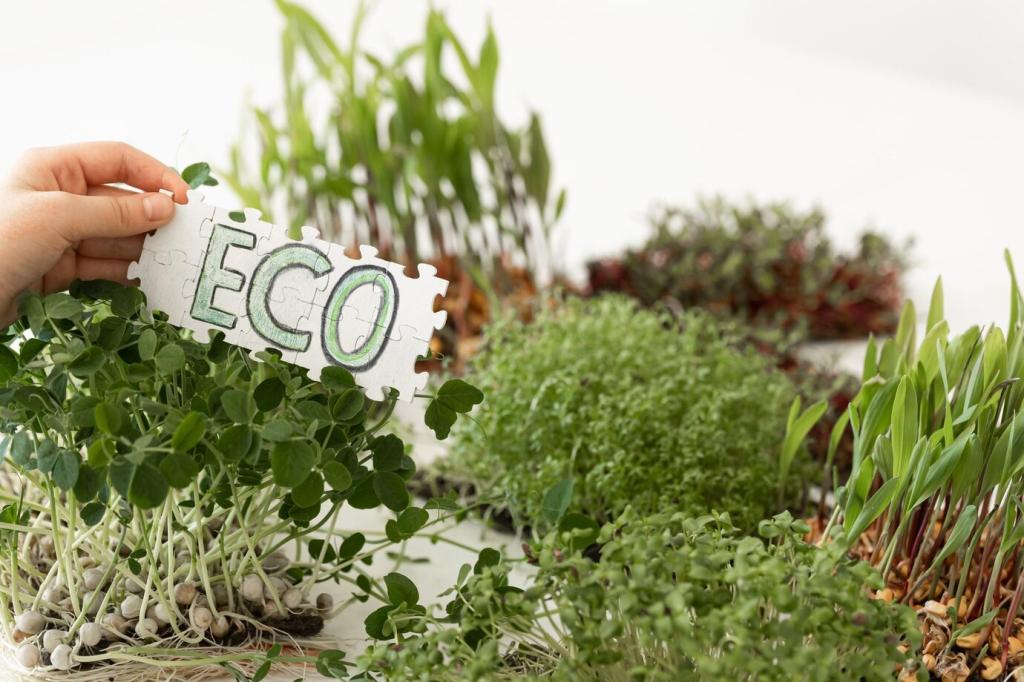Design Lightly: Building Places Through Low-Impact Site Development
Theme selected: Low-Impact Site Development. Welcome to a home for gentle, place-first design—where water is welcomed, soils stay alive, and habitats remain connected. Join us, share your experiences, and subscribe for grounded, field-tested ideas you can put to work.
What Low-Impact Site Development Really Means
Beyond a smaller building footprint, low-impact design reduces how harshly a project touches water, soil, and habitat. It favors light grading, careful access routes, and designing with the site’s quiet logic instead of forcing conformity.


What Low-Impact Site Development Really Means
Start by mapping trees, drainage, and soils before drawing anything. Keep as much native ground undisturbed as possible. Slow stormwater near where it falls. Use materials that breathe. Plan maintenance from day one, not as an afterthought.
Permeable Pavements That Actually Work
Choose permeable pavers or porous asphalt over conventional surfaces where subgrade allows. Pair with a well-graded, open-graded base, clear maintenance access, and seasonal sweeping. Share your experience with clogging and how often your team vacuums to keep infiltration strong.
Rain Gardens And Bioswales With Purpose
Size features to expected runoff, layer mulch and engineered soil, and plant deep-rooted natives. Check dams create short, calm steps. Watch birds arrive the first season. Readers, what plant mixes have handled both summer droughts and sudden spring downpours for you?
Micro-Topography And Curb Cuts
A few centimeters of grade can redirect sheet flow into green edges instead of pipes. Add curb cuts, armored inlets, and overflow paths. Test during the first storm and tune. Tell us how you safely guided water away from entries without overbuilding.
Soil And Habitat As Infrastructure
Topsoil Stewardship And Compost
Strip, stockpile, and protect topsoil from compaction and erosion. Reapply with compost to rebuild biology. A living soil sponge cuts irrigation, cools microclimates, and buffers storms. What sampling or penetrometer tests have helped you confirm recovery after construction?

Construction Practices That Leave Fewer Scars

Stabilize early and often. Combine silt fencing with compost socks, inlet protection, and quick vegetative cover. Inspect before storms and after. What details have kept fine sediments out of drains when a surprise downpour hit your site late Friday?
Smarter Layouts, Smaller Impacts
Cluster buildings on the least sensitive ground, reserve contiguous open space, and record conservation easements. Trails and views still flourish. Have you mapped seasonal wetness to place clusters wisely, or used lidar to confirm subtle drainage divides?


Smarter Layouts, Smaller Impacts
Reduce paved width where safety allows, use shared surfaces, and pinch radii to slow traffic. Less asphalt means cooler summers and more infiltration. Tell us how fire access or delivery needs shaped your final geometry without bloating the pavement.
Proving It Works And Keeping It Working
Baselines, Benchmarks, And Storylines
Set photo points, simple infiltration checks, and vegetation plots before construction. Compare season by season, noting what surprised you. Which low-cost metrics helped you explain performance clearly to a client or planning board skeptical of new methods?
Maintenance That Matters
Schedule vacuum sweeping for permeable pavements, seasonal weeding in rain gardens, and gutter cleanouts before storms. A modest, steady plan outperforms heroic rescues. Share your annual checklist so others can adapt it to their climate and crews.
Community Stewardship And Feedback
Host walking tours after rain, invite residents to adopt swales, and publish simple dashboards. When people feel ownership, systems thrive. Subscribe for templates, and comment with tips that made stewardship welcoming rather than another chore.
